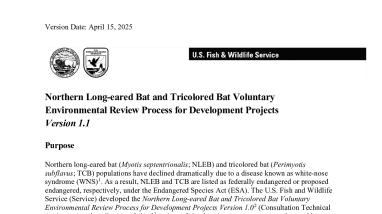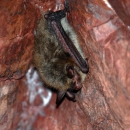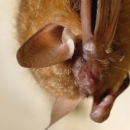The Northern Long-eared Bat (NLEB) and Tricolored Bat (TCB) Voluntary Environmental Review Process for Development Projects (Consultation Technical Assistance) is one of the tools the Service developed for both the NLEB and the TCB. The Consultation Technical Assistance would be applicable to the TCB if the final determination is to list the species under the Endangered Species Act. This document includes a step-by-step voluntary approach to consultation for both species for all project types except wind turbine operation, sustainable forest management, or projects included under other programmatic consultations. The document prescribes minimum conservation measures expected for projects that are likely to adversely affect NLEB and/or TCB. Our intent is to provide these measures up front for regulatory predictability and consistency.
Publication date
Media Usage Rights/License
Public Domain
Program
Species
FWS Focus
FWS Focus



